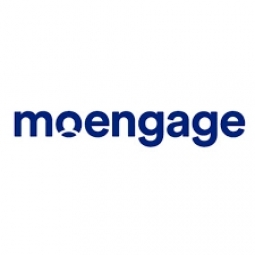技术
- 分析与建模 - 机器学习
- 网络与连接 - 5G
适用行业
- 金融与保险
- 公用事业
适用功能
- 销售与市场营销
用例
- 行为与情绪追踪
- 牲畜监测
服务
- 系统集成
关于客户
Freo 品牌 MoneyTap 是印度首个基于应用程序的信贷额度,旨在为数百万印度人在需要时提供信贷服务。 MoneyTap 业务遍及 80 多个城市,提供中小额现金贷款、移动快速信贷、实惠的利率和灵活的 EMI。 MoneyTap 为客户提供更快、更实惠的信贷渠道,让他们绕过繁琐的贷款申请流程,避免信用卡贷款的高利率。申请信贷的过程大大简化,只需在 MoneyTap 移动应用程序上点击几下即可,使任何拥有智能手机和 PAN 的个人都可以更轻松地申请个人信贷额度。 MoneyTap 自 2016 年开始,在过去 5 年里不断发展业务,基于应用程序的信贷额度已发放了 400 亿印度卢比的贷款。
挑战
MoneyTap 是印度基于应用程序的信贷额度,在与客户保持一致且相关的沟通方面面临着多项挑战。该公司的业务目标是鼓励人们使用信贷额度并从中提取资金,要求沟通具有关联性、趣味性和相关性。然而,该公司正在处理各种渠道的大量通信,包括短信、推送通知和电子邮件。发送给客户的沟通需要简化和微调,以确保所有渠道的一致性。造成混乱的原因是多个团队发起了具有不同目标的各种活动。此外,注册后的客户数量大幅下降,客户没有完成贷款审批申请。 MoneyTap 需要一个整合的平台来消除孤岛并确保所有团队与传出的沟通保持同步。
解决方案
为了克服这些挑战,MoneyTap 实施了 Flows 活动,通过多个渠道通过一致的消息传递来接触客户。该公司还将电子邮件视为发送主要通信内容的主要渠道,重点关注打开率、点击率和事件跟踪来衡量电子邮件通信的成功程度。 MoneyTap 使用 MoEngage,该平台可以将运行各种活动的多个仪表板与连接的事件进行整合,从而更轻松地识别客户行为和属性。这使得基于应用程序的信用额度能够创建 360 度的客户视图。 MoneyTap 还使用以洞察为主导的参与方法来加深对客户的了解。 MoneyTap 使用 MoEngage Analytics 分析了新加入的客户,预测他们的首选沟通渠道、内容偏好以及流失的可能性。分析完成后,MoneyTap 根据地理位置、内容亲和力和首选语言创建客户细分,并在此基础上添加个性化层。
运营影响
数量效益

Case Study missing?
Start adding your own!
Register with your work email and create a new case study profile for your business.
相关案例.

Case Study
IoT Solutions for Smart City | Internet of Things Case Study
There were several challenges faced: It is challenging to build an appliance that can withstand a wide range of voltage fluctuations from as low at 90v to as high as 320v. Since the device would be installed in remote locations, its resilience was of paramount importance. The device would have to deal with poor network coverage and have the ability to store and re-transmit data if networks were not available, which is often the case in rural India. The device could store up to 30 days of data.

Case Study
Automation of the Oguz-Gabala-Baku water pipeline, Azerbaijan
The Oguz-Gabala-Baku water pipeline project dates back to plans from the 1970’s. Baku’s growth was historically driven by the booming oil industry and required the import of drinking water from outside of the city. Before the construction of the pipeline, some 60 percent of the city’s households received water for only a few hours daily. After completion of the project, 75 percent of the two million Baku residents are now served around the clock with potable water, based on World Health Organization (WHO) standards. The 262-kilometer pipeline requires no pumping station, but uses the altitude differences between the Caucasian mountains and the capital to supply 432,000 m³/d to the Ceyranbatan water reservoir. To the people of Baku, the pipeline is “the most important project not only in 2010, but of the last 20 years.”

Case Study
GPRS Mobile Network for Smart Metering
Around the world, the electricity supply industry is turning to ‘smart’ meters to lower costs, reduce emissions and improve the management of customer supplies. Smart meters collect detailed consumption information and using this feedback consumers can better understand their energy usage which in turn enables them to modify their consumption to save money and help to cut carbon emissions. A smart meter can be defined in many ways, but generally includes an element of two-way communication between the household meter and the utility provider to efficiently collect detailed energy usage data. Some implementations include consumer feedback beyond the energy bill to include online web data, SMS text messages or an information display in consumers’ premises. Providing a cost-effective, reliable communications mechanism is one of the most challenging aspects of a smart meter implementation. In New Zealand, the utilities have embraced smart metering and designed cost effective ways for it to be implemented. The New Zealand government has encouraged such a move to smart metering by ensuring the energy legislation is consistent with the delivery of benefits to the consumer while allowing innovation in this area. On the ground, AMS is a leader in the deployment of smart metering and associated services. Several of New Zealand’s energy retailers were looking for smart metering services for their residential and small business customers which will eventually account for over 500,000 meters when the multi-year national deployment program is concluded. To respond to these requirements, AMS needed to put together a solution that included data communications between each meter and the central data collection point and the solution proposed by Vodafone satisfied that requirement.

Case Study
NB-IoT connected smart meters to improve gas metering in Shenzhen
Shenzhen Gas has a large fleet of existing gas meters, which are installed in a variety of hard to reach locations, such as indoors and underground, meaning that existing communications networks have struggled to maintain connectivity with all meters. The meter success rate is low, data transmissions are so far unstable and power consumption is too high. Against this background, Shenzhen Gas, China Telecom, Huawei, and Goldcard have jointly trialed NB-IoT gas meters to try and solve some of the challenges that the industry faces with today’s smart gas meters.

Case Study
British Gas Modernizes its Operations with Innovative Smart Metering Deployment
The UK government has mandated that smart meters are rolled out as standard across Great Britain by end of 2020, and this roll-out is estimated to create £14 billion in net benefits to the UK in consumer energy savings and lower energy generation demand, according to the Oxford Economics report, “The Value of Smart Metering to Great Britain.” While smart-metering systems have been deployed in many countries, the roll-out in Great Britain is unique because it is led by energy retailers, who have responsibility for the Electricity and Gas meters. The decision to have a retailer-led roll out was made by DECC (Department of Energy and Climate Change) to improve customer experience and drive consumer benefits. It has also led to some unique system-level requirements to support the unique local regulatory model.

Case Study
OneWireless Enabled Performance Guarantee Test
Tata Power's power generation equipment OEMs (M/s BHEL) is required to provide all of the instrumentation and measurement devices for conducting performance guarantee and performance evaluation tests. M/s BHEL faced a number of specific challenges in conducting PG tests: employing high-accuracy digital communications for instrumentation, shortening setup and dismantling time, reducing hardware required, making portable instrument setup, avoiding temporary cabling work and the material waste costs







